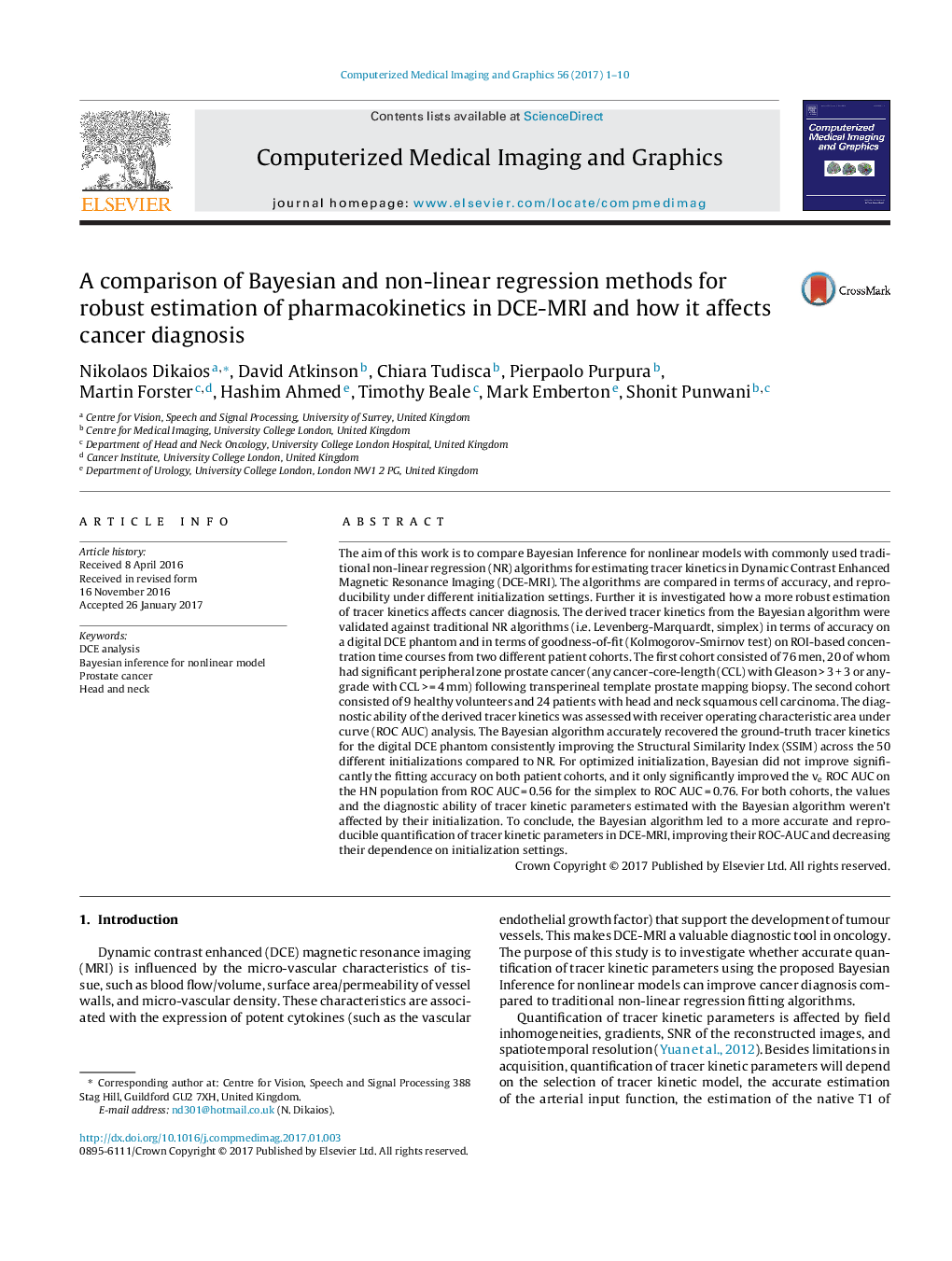| کد مقاله | کد نشریه | سال انتشار | مقاله انگلیسی | نسخه تمام متن |
|---|---|---|---|---|
| 4964698 | 1447889 | 2017 | 10 صفحه PDF | دانلود رایگان |
عنوان انگلیسی مقاله ISI
A comparison of Bayesian and non-linear regression methods for robust estimation of pharmacokinetics in DCE-MRI and how it affects cancer diagnosis
دانلود مقاله + سفارش ترجمه
دانلود مقاله ISI انگلیسی
رایگان برای ایرانیان
موضوعات مرتبط
مهندسی و علوم پایه
مهندسی کامپیوتر
نرم افزارهای علوم کامپیوتر
پیش نمایش صفحه اول مقاله

چکیده انگلیسی
The aim of this work is to compare Bayesian Inference for nonlinear models with commonly used traditional non-linear regression (NR) algorithms for estimating tracer kinetics in Dynamic Contrast Enhanced Magnetic Resonance Imaging (DCE-MRI). The algorithms are compared in terms of accuracy, and reproducibility under different initialization settings. Further it is investigated how a more robust estimation of tracer kinetics affects cancer diagnosis. The derived tracer kinetics from the Bayesian algorithm were validated against traditional NR algorithms (i.e. Levenberg-Marquardt, simplex) in terms of accuracy on a digital DCE phantom and in terms of goodness-of-fit (Kolmogorov-Smirnov test) on ROI-based concentration time courses from two different patient cohorts. The first cohort consisted of 76 men, 20 of whom had significant peripheral zone prostate cancer (any cancer-core-length (CCL) with Gleason > 3 + 3 or any-grade with CCL > = 4 mm) following transperineal template prostate mapping biopsy. The second cohort consisted of 9 healthy volunteers and 24 patients with head and neck squamous cell carcinoma. The diagnostic ability of the derived tracer kinetics was assessed with receiver operating characteristic area under curve (ROC AUC) analysis. The Bayesian algorithm accurately recovered the ground-truth tracer kinetics for the digital DCE phantom consistently improving the Structural Similarity Index (SSIM) across the 50 different initializations compared to NR. For optimized initialization, Bayesian did not improve significantly the fitting accuracy on both patient cohorts, and it only significantly improved the ve ROC AUC on the HN population from ROC AUC = 0.56 for the simplex to ROC AUC = 0.76. For both cohorts, the values and the diagnostic ability of tracer kinetic parameters estimated with the Bayesian algorithm weren't affected by their initialization. To conclude, the Bayesian algorithm led to a more accurate and reproducible quantification of tracer kinetic parameters in DCE-MRI, improving their ROC-AUC and decreasing their dependence on initialization settings.
ناشر
Database: Elsevier - ScienceDirect (ساینس دایرکت)
Journal: Computerized Medical Imaging and Graphics - Volume 56, March 2017, Pages 1-10
Journal: Computerized Medical Imaging and Graphics - Volume 56, March 2017, Pages 1-10
نویسندگان
Nikolaos Dikaios, David Atkinson, Chiara Tudisca, Pierpaolo Purpura, Martin Forster, Hashim Ahmed, Timothy Beale, Mark Emberton, Shonit Punwani,